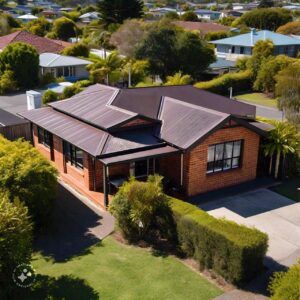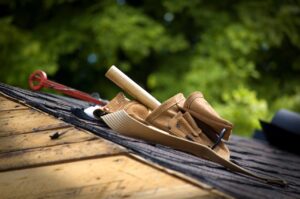Understanding Roof Inspections: What Homeowners Need to Know
Regular roof inspections are essential for maintaining the health and longevity of your home. By identifying potential issues early, homeowners can prevent costly repairs and extend the life of their roofs. This article will explain the importance of regular roof inspections, what to expect during an inspection, common issues found, and how to address them. We’ll also provide a handy checklist for homeowners to use.

The Importance of Regular Roof Inspections in Wellington
Preventative Maintenance: Regular inspections help detect minor issues before they become major problems, saving you from expensive roof repairs or premature roof replacement.
Extend Roof Lifespan: According to Jay from Roofing Wellington, Proper maintenance and timely repairs can significantly extend the life of your roof, ensuring you get the maximum value from your investment.
Ensure Safety: A damaged roof can pose safety hazards, such as falling debris or structural failure. Inspections help maintain the integrity of your roof, ensuring it remains safe for your family.
Protect Home Value: A well-maintained roof enhances your home’s curb appeal and overall value, making it more attractive to potential buyers.
What to Expect During a Roof Inspection
A professional roof inspection typically involves a thorough examination of your roof’s exterior and interior components. Here’s what you can expect:
1. Exterior Inspection:
- Shingles: The inspector will check for missing, cracked, curled, or blistered shingles. They will also look for granule loss, which can indicate aging shingles.
- Flashing: Flashing around chimneys, vents, and skylights will be inspected for cracks, rust, or separation from the roof surface.
- Gutters and Downspouts: The inspector will ensure gutters and downspouts are clear of debris and securely attached. They will check for signs of sagging or leaks.
- Soffits and Fascia: These components will be inspected for signs of rot, damage, or pest infestations.
- Roof Vents: The inspector will check for blockages and ensure vents are properly installed and functioning.
2. Interior Inspection:
- Attic: The inspector will examine the attic for signs of leaks, mold, or mildew. They will also check the insulation and ventilation to ensure they are adequate.
- Ceilings and Walls: Inside the home, the inspector will look for water stains, peeling paint, or other signs of roof leaks.
Common Issues Found During Roof Inspections in Wellington
1. Leaks and Moisture:
- Leaks can result from damaged shingles, flashing issues, or poor installation. Moisture in the attic can lead to mold growth and structural damage.
2. Shingle Damage:
- Weather conditions, age, and poor installation can cause shingles to crack, curl, or blister. Damaged shingles can compromise the roof’s integrity.
3. Flashing Problems:
- Flashing protects vulnerable areas like chimneys and vents. Damaged or improperly installed flashing can allow water to penetrate the roof.
4. Poor Ventilation:
- Inadequate ventilation can cause heat and moisture buildup in the attic, leading to shingle damage and mold growth.
5. Gutter Issues:
- Clogged or damaged gutters can cause water to overflow, leading to roof and foundation damage.
How to Address Common Roof Issues
1. Leaks and Moisture:
- Identify and repair the source of the leak promptly. Replace damaged shingles and flashing, and address any mold or mildew in the
 attic.
attic.
2. Shingle Damage:
- Replace damaged shingles as soon as possible to prevent further deterioration. Consider upgrading to more durable materials if your roof is aging.
3. Flashing Problems:
- Repair or replace damaged flashing. Ensure it is properly sealed to prevent future leaks.
4. Poor Ventilation:
- Improve attic ventilation by installing additional vents or upgrading existing ones. Proper ventilation helps regulate temperature and moisture levels.
5. Gutter Issues:
- Clean gutters regularly and repair any damage. Consider installing gutter guards to prevent debris buildup.
Roof Inspection Checklist for Homeowners
Use this checklist to conduct your own roof inspection or to ensure a thorough professional inspection:
Exterior Inspection:
- Check for missing, cracked, or curling shingles.
- Look for signs of granule loss on shingles.
- Inspect flashing around chimneys, vents, and skylights.
- Ensure gutters and downspouts are clear and securely attached.
- Examine soffits and fascia for damage or rot.
- Check roof vents for blockages or damage.
Interior Inspection:
- Look for water stains or signs of leaks on ceilings and walls.
- Inspect the attic for signs of moisture, mold, or mildew.
- Check attic insulation and ventilation.
Final Thoughts
Regular roof inspections are crucial for maintaining a safe, durable, and attractive home. By understanding what to expect during an inspection, recognizing common issues, and knowing how to address them, homeowners can take proactive steps to protect their investment. Use the provided checklist to ensure your roof remains in excellent condition, and consider scheduling professional inspections annually or after severe weather events.
Investing time and effort into regular roof maintenance can save you money in the long run and provide peace of mind knowing your home is well-protected. Happy inspecting




 Changing the floor is a quick way to revalue both a home and a room . Especially if the old one is already somewhat worn or it shows the passage of the years.
Changing the floor is a quick way to revalue both a home and a room . Especially if the old one is already somewhat worn or it shows the passage of the years.